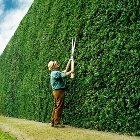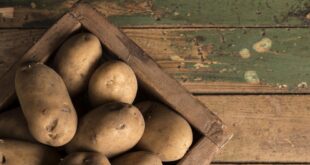Why choose a living fence when you can put in a plastic wonder in a few hours? The plastic wonder will always be just that – plastic. I'm sure everyone has seen the leaning, falling over fence along someone's yard or property line. Usually in less than 10 years a these once fine fences look and are less than desirable. Instead, try a living fence. This type of fencing is usually done with an evergreen plant that only gets better with age. 
These evergreen plants provide height and long term barriers. Many areas have restrictions on the height of fences, but no height restrictions on the size of trees and bushes. Thus you can have a screen that will eventually outlast and be taller than a man-made fence. They also provide homes and food for birds and other animals. The evergreen fence is usually wide and sound absorbing due to the texture of the plants and the width of the plants.
One type of commonly used evergreen for a living fence is the arborviate. There are many kinds of arborvitae. Commonly the Emerald Green Arborvitae is used for narrow barriers or hedges. It grows only 3-4 feet wide but can reach a height of 10-14 feet. It will be a deep green color all year and will stay compact and tight with no care. Tops can be trimmed to any height to the owner desires. Another widely used arborvitae is the Green Giant Arborvitae. This plant is truly a giant growing to a height of 30-40 feet tall and 6-8 feet wide. It is commonly used in areas where there are deer as this plant is considered deer resistant. When planted on 5 foot centers, the Green Giant Arborvitae will grow to be a green wall that can be over 30 feet tall and 6 feet wide.
Another set of commonly used plants are the pines and spruces. These green majesties will grow to 40 or more feet in height and at least 8-10 feet in width. The pines are known for their fast growing nature and airy beauty. The spruces are more slow growing, but denser. Each will form a wide, evergreen wall that will grow in beauty and size for many years. They provide a variety of textures and colors as well as the ability to mix these conifers in a formation highlighting the fast growing and airy with the slower, but denser grower.









Join the Discussion
Type out your comment here:
You must be logged in to post a comment.